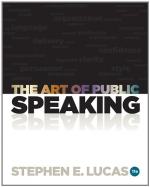Let us, then, as we assemble on the birthday of the nation, as we gather upon the green turf, once wet with precious blood—let us devote ourselves to the sacred cause of constitutional liberty! Let us abjure the interests and passions which divide the great family of American freemen! Let the rage of party spirit sleep to-day! Let us resolve that our children shall have cause to bless the memory of their fathers, as we have cause to bless the memory of ours!
—EDWARD EVERETT.
CHAPTER VIII
CONCENTRATION IN DELIVERY
Attention is the microscope of the mental eye. Its power may be high or low; its field of view narrow or broad. When high power is used attention is confined within very circumscribed limits, but its action is exceedingly intense and absorbing. It sees but few things, but these few are observed “through and through” ... Mental energy and activity, whether of perception or of thought, thus concentrated, act like the sun’s rays concentrated by the burning glass. The object is illumined, heated, set on fire. Impressions are so deep that they can never be effaced. Attention of this sort is the prime condition of the most productive mental labor.
—DANIEL PUTNAM, Psychology.
Try to rub the top of your head forward and backward at the same time that you are patting your chest. Unless your powers of cooerdination are well developed you will find it confusing, if not impossible. The brain needs special training before it can do two or more things efficiently at the same instant. It may seem like splitting a hair between its north and northwest corner, but some psychologists argue that no brain can think two distinct thoughts, absolutely simultaneously—that what seems to be simultaneous is really very rapid rotation from the first thought to the second and back again, just as in the above-cited experiment the attention must shift from one hand to the other until one or the other movement becomes partly or wholly automatic.
Whatever is the psychological truth of this contention it is undeniable that the mind measurably loses grip on one idea the moment the attention is projected decidedly ahead to a second or a third idea.
A fault in public speakers that is as pernicious as it is common is that they try to think of the succeeding sentence while still uttering the former, and in this way their concentration trails off; in consequence, they start their sentences strongly and end them weakly. In a well-prepared written speech the emphatic word usually comes at one end of the sentence. But an emphatic word needs emphatic expression, and this is precisely what it does not get when concentration flags by leaping too soon to that which is next to




